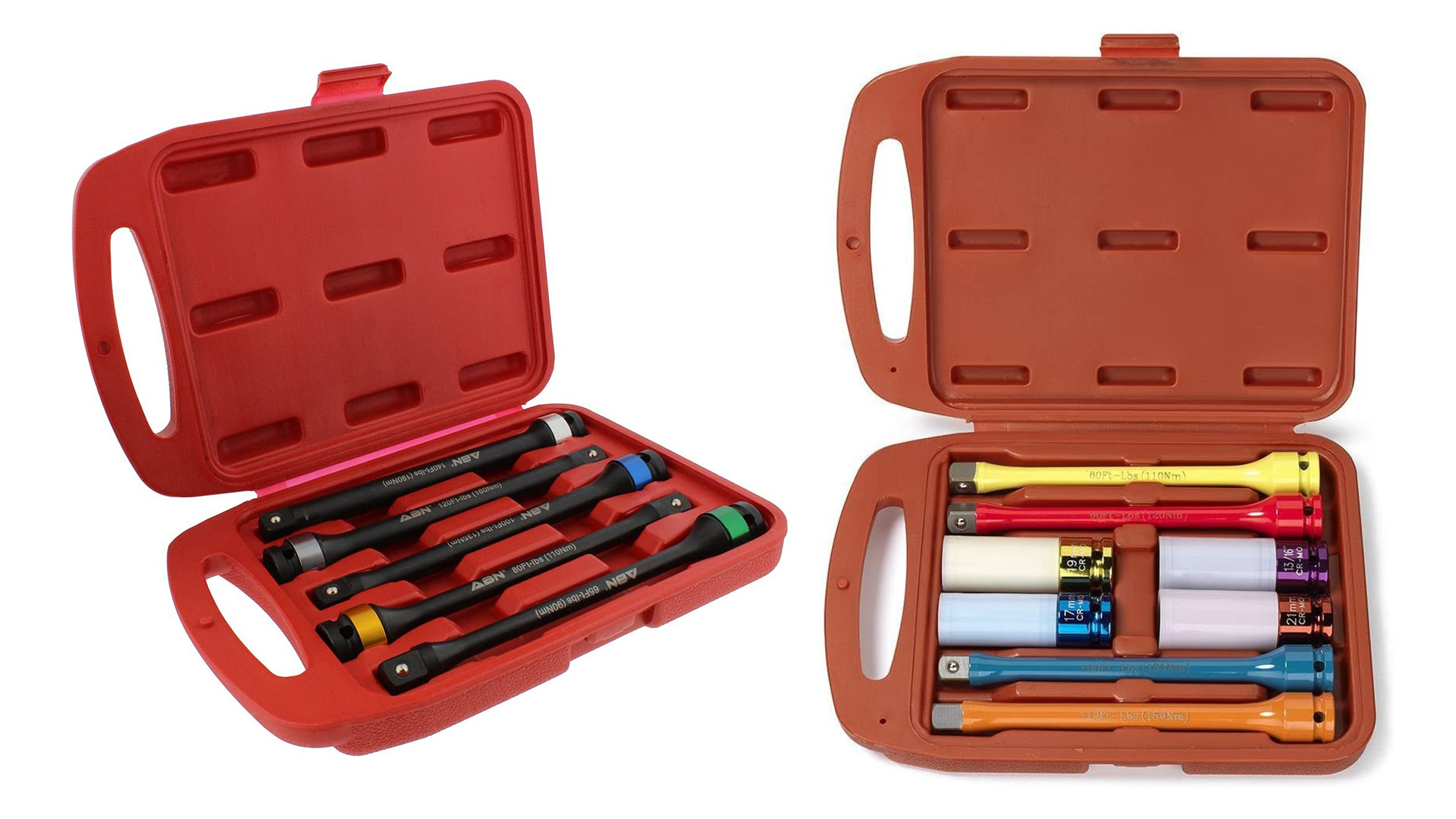

We may earn revenue from the products available on this page and participate in affiliate programs. Learn more ›
The amount of automotive tools that have been invented to both save time, and promote accuracy, is a seemingly endless list. When it comes to achieving accuracy for a crucial aspect of safe driving, such as torquing down wheel nuts and bolts, one handy component that’s been in wide use for some years now is the torque-limiting extension, also known as the torque stick.
The torque stick’s function is quite simple: allow torque up to a preset amount in order to ensure a nut or bolt is both tight enough and not too tight, and in a quick, no-brains-required fashion. They can only be used with impact wrenches, too, either of the pneumatic or electric variety.
But these geniusly simple contraptions are contentious: are they really accurate? Do they wear out? Is using them ideal? Do they really save time? Let’s discuss how they work, how they’re used, and some considerations if you’re thinking about picking up a set for your own wrenching.

Torque Stick Basics
The way these things function is very straightforward. They take the form of an extension, meaning they’re mounted between an impact gun and socket, and are made of sprung steel that stops sending torque to the socket when its limit is reached. They’re sold in sets (or individually) that have different values for different applications, most commonly for properly torquing down a nut or bolt to a manufacturer’s recommended amount.
The reason for their use is simple: quickly zip on wheel nuts and bolts, as well as any other applicable hardware without having to spend the amount of time it takes to use a torque wrench.
Here’s the Rub About Torque Sticks
We won’t state any kind of official opinion about torque sticks as users’ experiences and reviews are incredibly widespread.
Some folks say they’re great and are indeed a fast way to ensure you don’t over-tighten important hardware. There’s absolutely nothing worse than dealing with wheel nuts or bolts that were over-tightened by a random tire shop. The amount of time that torque sticks save ccould all add up at the end of the day, especially if they’re used in a shop that gets a lot of business day in, day out. Time is always money.
Then, if that shops’ pneumatic impact guns produce a very high amount of torque, the stick could be useful in ensuring only a fraction of it goes to the bolt or stud and in the proper amount.
In some scenarios, torque still might make its way through to the hardware past the limit if its being sent at a very high rate, rendering the stick useless. Some users have reported that this happens with high-fastening-torque lithium impacts.
Finally, another consideration is torque sticks are like any other tool that includes some form of measurement: there could be wide variances, and they could lose their torque values over time. This is a consideration with torque wrenches, too, but a properly cared for and used torque wrench of good quality typically won’t lose much of its accuracy over time. Though, that’s a whole ‘nother discussion for another post.

Truly Useful?
When it comes to using torque sticks and ensuring that they’re indeed zipping hardware up to the proper spec, some folks say it’s a good idea to then follow up with a torque wrench—ensuring accuracy for such a job is important, but some say this defeats the purpose of the torque stick in the first place. Just start the hardware by hand, wind it down, then follow up with a torque wrench.
For at-home wrenching purposes, torque sticks might not make sense because speed usually isn’t a big concern. At least if you’re not living vicariously through your favorite racing team’s pit crew.
Though, this brings up another potentially worthwhile application: motorsports. For grassroots/club-level teams, using torque sticks might save some time during an event, both during prep and repair off-track as well as during wheel changes in the hot pit. Though, in endurace racing, rulebooks usually include a minimum pit time that ensures teams aren’t rushed.
Finally, another useful scenario could be buzzing on nuts or bolts with an under-valued torque stick and then following up with a torque wrench. By using a lower-torque-valued stick, this completely eliminates any potential initial overtorqueing with an impact.
Go Forth and Torque Accurately
If using torque sticks sounds like a useful, time-saving addition to your wrenching, there are plenty of well-rated quality sets out there. It’s important to point out that some users say it’s a good idea to at least periodically follow up their use with a torque wrench to make sure they’re maintaining their ratings.
Otherwise, it’s very much a “your mileage may vary” scenario—the cost/benefit ratio might or might not swing towards being worth it in the end.
However, there is definitely an overarching theme here: no matter one’s preferred method, properly torquing hardware to its rating is incredibly important. Especially on crucial components like wheel hardware.
Video
For some good visual education on all-things torque sticks, including exactly how they work, check out this thorough video:

More From The Drive
- Hank O’Hop outlines the best cordless impact wrenches
- Here’s how to buff your car
- What in the world is DEF?
- Here’s how you charge a car battery